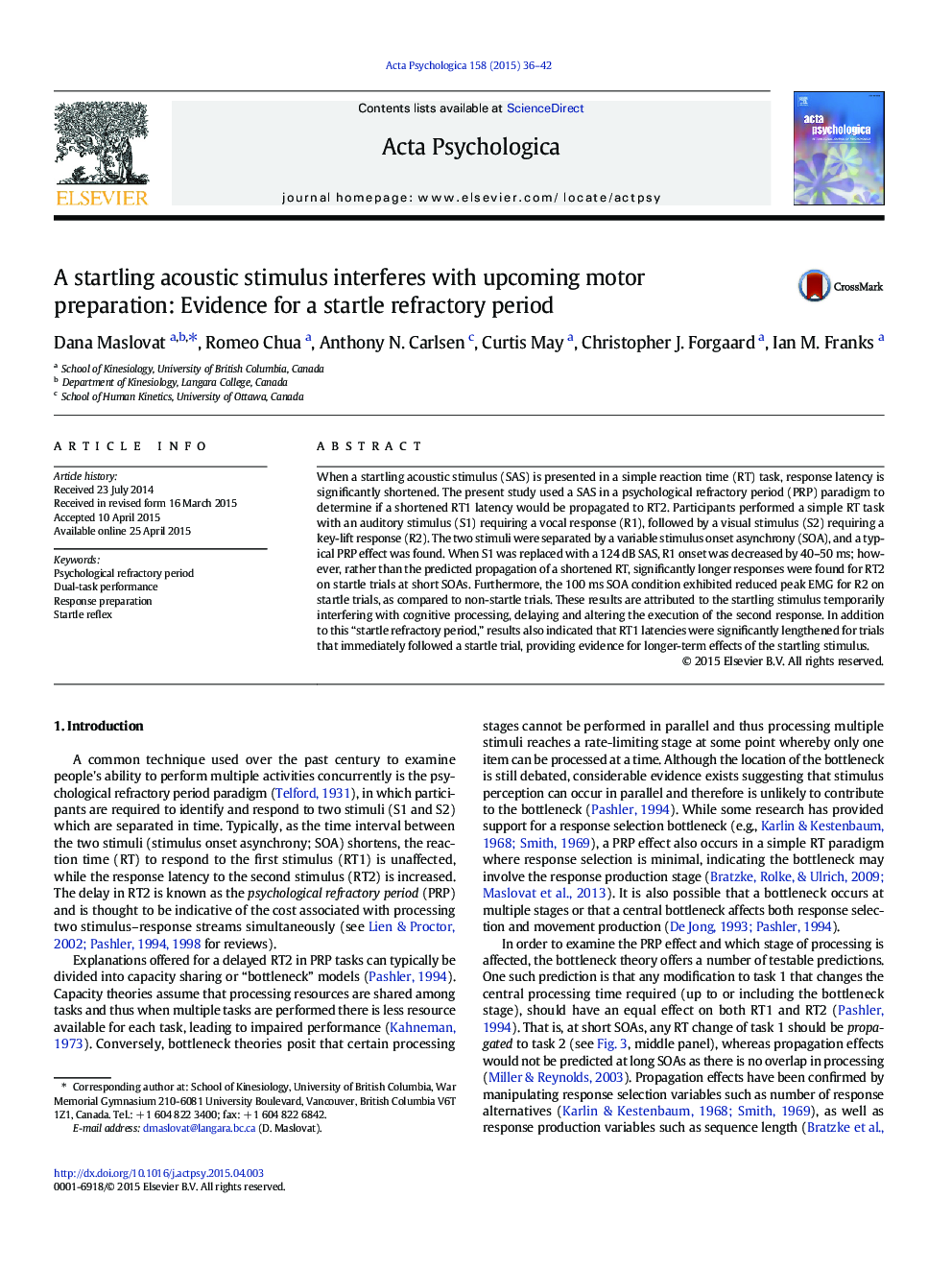| Article ID | Journal | Published Year | Pages | File Type |
|---|---|---|---|---|
| 919701 | Acta Psychologica | 2015 | 7 Pages |
•Subjects performed in a dual-task paradigm with a variable stimulus onset asynchrony.•First stimulus was replaced with startling acoustic stimulus to speed first response.•Examined propagation of first response reaction time “savings” to second response•Rather than propagation effects, second response was delayed on startle trials.•Results suggest a startle refractory period due to cognitive interference/inhibition.
When a startling acoustic stimulus (SAS) is presented in a simple reaction time (RT) task, response latency is significantly shortened. The present study used a SAS in a psychological refractory period (PRP) paradigm to determine if a shortened RT1 latency would be propagated to RT2. Participants performed a simple RT task with an auditory stimulus (S1) requiring a vocal response (R1), followed by a visual stimulus (S2) requiring a key-lift response (R2). The two stimuli were separated by a variable stimulus onset asynchrony (SOA), and a typical PRP effect was found. When S1 was replaced with a 124 dB SAS, R1 onset was decreased by 40–50 ms; however, rather than the predicted propagation of a shortened RT, significantly longer responses were found for RT2 on startle trials at short SOAs. Furthermore, the 100 ms SOA condition exhibited reduced peak EMG for R2 on startle trials, as compared to non-startle trials. These results are attributed to the startling stimulus temporarily interfering with cognitive processing, delaying and altering the execution of the second response. In addition to this “startle refractory period,” results also indicated that RT1 latencies were significantly lengthened for trials that immediately followed a startle trial, providing evidence for longer-term effects of the startling stimulus.
